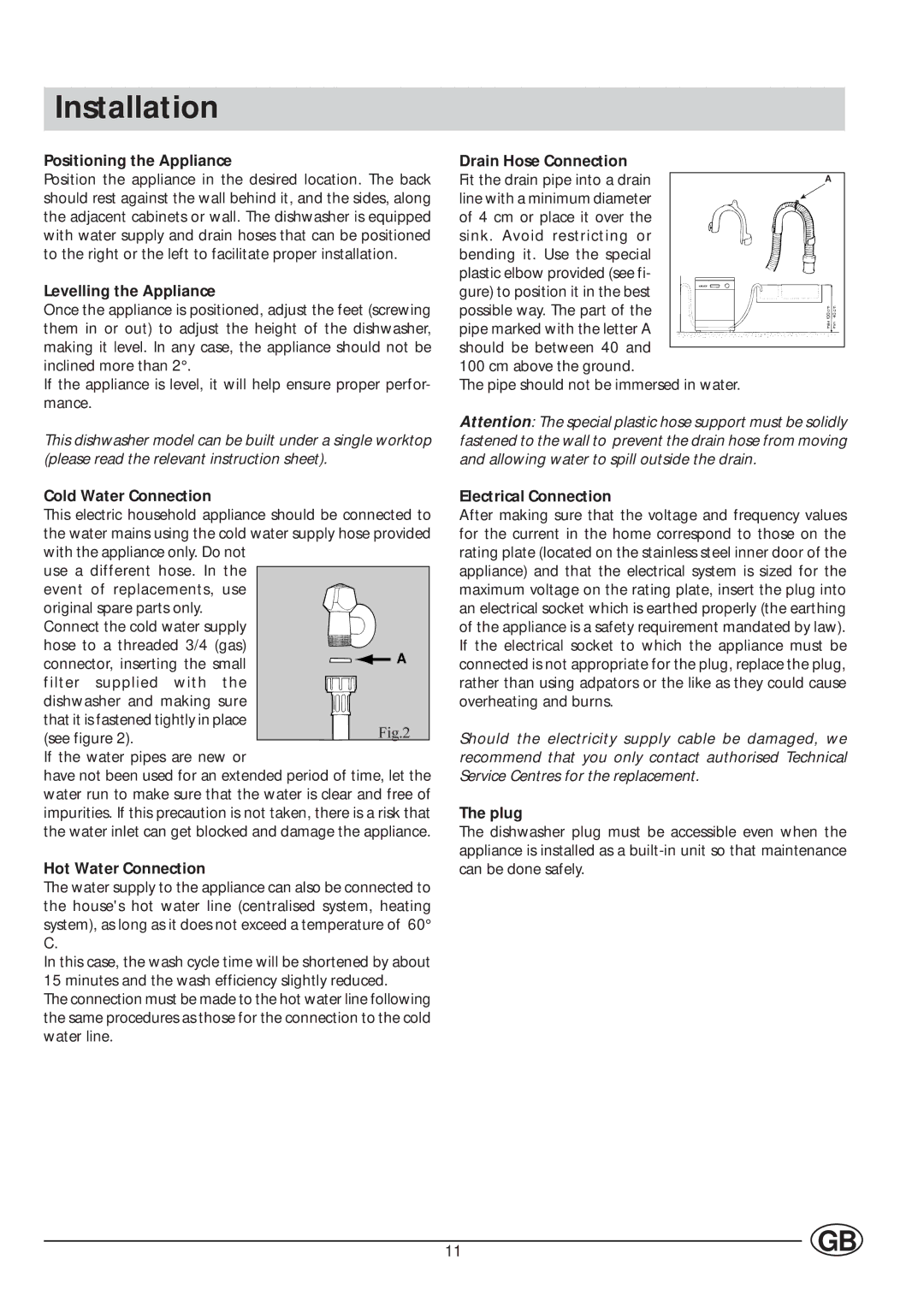IDE 1005SUK, IDE1000UK specifications
The Indesit IDE1000UK and IDE1005SUK are notable models in the compact freestanding washing machine sector, designed to cater to the needs of modern households. Both appliances integrate advanced technology and user-friendly features, making them excellent choices for efficient laundry care.The Indesit IDE1000UK is built with a 6 kg capacity, allowing users to wash a significant amount of laundry in one go. It operates with a maximum spin speed of 1000 RPM, effectively removing excess water from clothes, thereby reducing drying time. The model includes a range of wash programs tailored to different fabric types and laundry requirements. From quick washes to delicate cycles, the IDE1000UK aims to provide versatility without sacrificing performance. The machine's Energy Efficiency Class is typically rated at A+, ensuring that it operates with lower energy consumption, which is beneficial for both the environment and household running costs.
Meanwhile, the Indesit IDE1005SUK enhances the user experience further with its slight increase in capacity at 5 kg. It also features a 1000 RPM maximum spin speed, making it efficient for everyday laundry needs. Both models come equipped with the popular Push & Wash function designed for busy lifestyles—a simple button that allows users to initiate a 30-degree wash for an array of fabrics in just one step.
Moreover, the models are equipped with advanced water-saving technologies which not only contribute to sustainability but also enhance performance with the optimal use of water and detergent during washes. The intuitive control panel features user-friendly dials and buttons that allow users to select their desired wash settings without confusion.
Durability and build quality are also significant characteristics of these machines, constructed with high-quality materials to ensure longevity and reliability. The noisy operation has been minimized thanks to advanced engineering, which is a valuable feature in homes where quiet machinery is preferred.
In summary, the Indesit IDE1000UK and IDE1005SUK washing machines are designed for efficiency and convenience, perfect for small to medium-sized households. Their combination of practical features, energy-efficient operation, and thoughtful design make them reliable partners in daily laundry routines.

